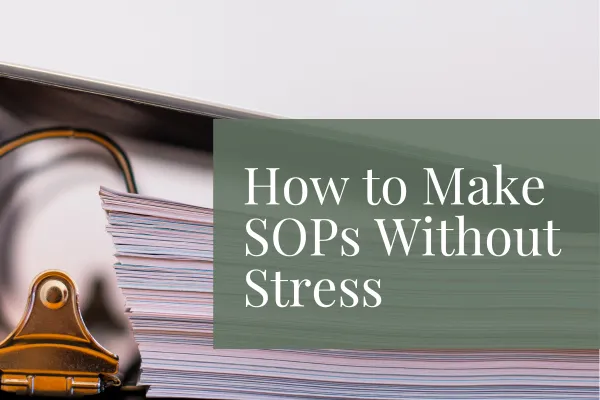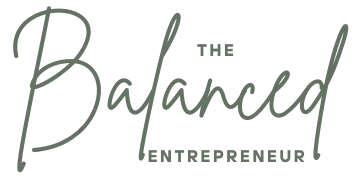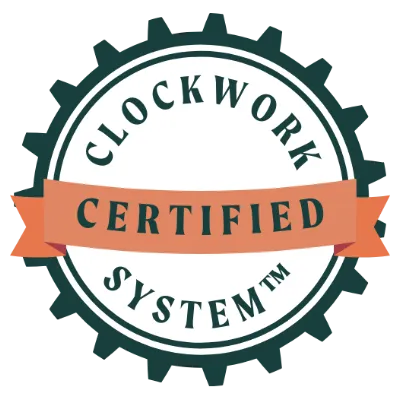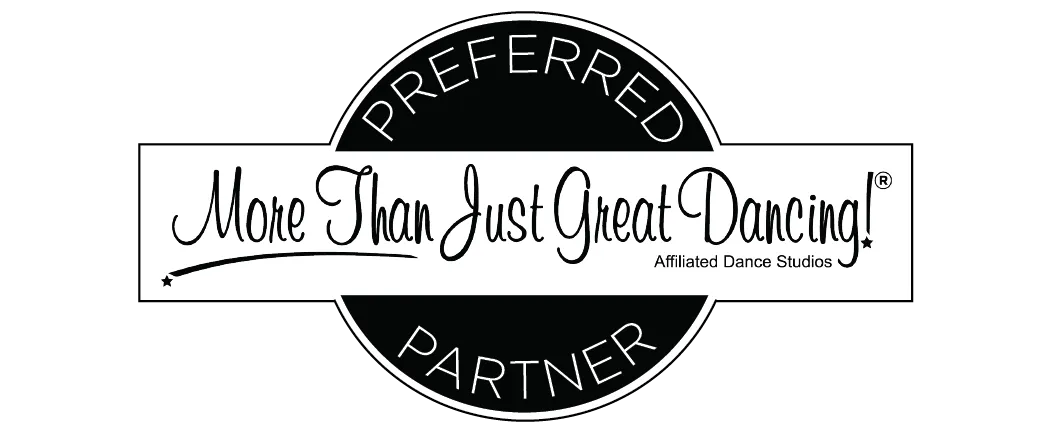Can your dance studio run without you? Take the quiz!
We help dance studio owners reclaim their time so they can work in their business when and how they want.
Are you a dance studio owner feeling overwhelmed by the constant demands of your business?
Discover the power of The Clockwork System™—a proven approach that empowers you to regain control of your business while reclaiming your precious time.
Our personalized coaching sessions will guide you through the process of freeing yourself from the daily grind of running your business. Once Clockworked, you'll enjoy the freedom to dictate your own schedule and workload, reclaiming the work-life balance you've been longing for. Let us help you unlock the true potential of your business while reclaiming your time.


Meet Briar & Lia
Meet Briar and Lia, entrepreneurial sisters driven to make your life easier. They specialize in creating efficient, streamlined processes designed to help you achieve your full potential.
From their upbringing in a family-owned dance studio to successfully running their own ventures, Briar and Lia have been immersed in countless entrepreneurial journeys. Now, as Clockwork Certified Partners™, they're thrilled to assist entrepreneurs like you in achieving a harmonious balance between personal and professional life.
OUR APPROACH
Central to our approach is compassion
We know you've poured your soul into creating something amazing, and we're here to cheer you on and help you take it to the next level.
At The Balanced Entrepreneur, we champion the power of simplicity and effectiveness in business. Success doesn't require endless hustle—it's about working smarter, not harder. Let us guide you in streamlining your business, focusing only on what truly matters for your success.
How we can help you

Courses
More details coming soon!!

Be Immersed
Team up with a Clockwork Certified Partner™ for a tailor-made implementation of The Clockwork System!

Be Connected
Join a select group of forward-thinkers and learn The Clockwork System™ alongside motivated business leaders.
New on the podcast...

How to make SOPs without stress
Briar
So today we are back to talk specifically about setting up your SOPs. We are going to talk about those systems and processes and how to actually start capturing them. Now last week we touched on this just a little bit, but today we're going to go into some step by step options on how to get your systems captured without completely stressing you out.
So Lia, I'm going to let you take it away and how you would go about this and let you look at first.
Lia
Alright, so the key here is not stressing yourself out or stressing your team out. This can be a very overwhelming process and it can take a really long time.
So, just putting that out at the beginning that this isn't going to be done in a week. It isn't going to be done in a month. It will probably take you, you know, a year even if not longer. That's okay. This is a work in progress and something that is just good to know upfront that this isn't a quick thing to do.
So SOP, which stands for standing operating procedures. This is where we're going to somehow capture what it is that you do in your business so that it can be replicated by somebody else.
This is our goal, right? And there's a few ways to do this without adding a ton of stress to yourself and your team.
So one of the first things that is important to think about is rather than sitting down to say, okay, I'm going to do all these SOPs for all these things, we want you to think rather, what am I doing today or this week that I can just capture as I'm doing it, right?
So if you are processing registration, can you capture it as you're processing it? If you are unboxing costumes, can you capture that as you're unboxing them?
So we love using a tool like Loom, L-O-O-M, Loom, it captures your screen. I believe they also have an app you can have on your phones, you can take videos if you're doing something like unboxing costumes, but we love the video SOP because we can see what's happening in real time rather than having to write out all the steps that you do.
Somebody can just follow along with your screen or follow along with your video and it's actually a really easy way for someone to learn how to do a task as well as an easy way for you to capture that task and get that task recorded.
So those are some of the key things. We want to capture as we go and we want to capture with an easy to use tool something like Loom.
Briar, what else do you have on your list for capturing systems or creating SOPs?
Briar
Well first I want to quickly just point out and remind everybody the benefit of capturing systems because you're right it can feel like a long and tedious process sometimes. But the real benefit is that anybody should be able to step into any role and be able to follow your SOP and have the outcome, the same outcome as the next person doing the same task.
So having those videos that you're mentioning, Lia, makes it so streamlined and so straightforward and so easy for somebody to follow along and know if they're doing things correctly.
I think that's one of the main benefits of doing it. And when we're looking at, you know, creating these SOPs over the course of a year or so, just remember it's a work in progress, right?
We can be tweaking systems and tweaking these SOPs year after year as well. So, you know, if you've got your Loom video on unboxing costumes and somebody comes up with a more efficient way two years down the road, it's a lot easier to just tweak that video or tweak that system then feeling like you're starting from scratch, so I just wanted to point those to a couple of things out as well.
Lia
I'll just gonna interrupt here for a second It's not just the process that might change but particularly when you're doing capturing a system with a technology like your studio management software, if you're using Jackrabbit or something like that, these things change their dashboards and how they look change quite frequently, so you know if you've created a video last year or the year before of how to do something somebody might go in and it will look different, so it's nice to be able to have a quick and easy way to change that and update that doesn't mean you have to rewrite 15 steps that say, “you're gonna find this button in the top right hand corner”. A lot of the minutiae of tasks, particularly when we're talking about a software like that, you can easily see what's happening in a video. I can see that the mouse is going to the top right hand corner and clicking on that button. I don't need to be told to go to the top right hand corner and click on that button. I can just see it.
So it cuts out a lot of that time and it's easy to update it when it needs to be updated.
Briar
Yeah, I totally agree on that. So next thing we want to talk about is how do we determine which SOPs to start with, right?
It can be really overwhelming, like Lia mentioned, thinking or looking at your list of things that you need to create SOPs for.
And the first thing that I want to say is, don't like Lia mentioned, don't try to do them all at once.
Choose one or two things that you're already going to be doing that week to create the SOPs for, because that really sort of narrows in what you're going to be doing that week and you can just pick from those items.
But when you're looking at sort of your big list, we want to take a step back almost and go to your time tracking sheet that you have done. And in that time tracking sheet, if you have done your four T's, you have labeled each of your tasks that you do each day with one of the four T's, you can easily decipher which ones are your transfer items.
And those are the ones that we want to start capturing systems for first, because those are the tasks that you know eventually, whether it's next week or whether it's a year from now, that you want to transfer off your plate, which means you need to have a system in place for that new person to be able to follow and do the task.
So we're going to be looking at our transfer items and then choosing which one you're doing that week to start with your Loom video or with your capturing of your system. Does that make sense, Lia?
Lia
That makes sense. I also just want to say, I'm not sure, Briar, that we've actually talked about time tracking in the four T's here on the podcast yet, but we do have a great course that we will link to in the show notes on applying the four T's.
So you can learn more about that there.
Briar
Absolutely. Sometimes I forget what we've done on our courses, what we've done on our podcast. But yes, and if you've read the book, then you'll have a little bit more of an idea of what I'm talking about too with those four T's.
Lia
Yes, exactly. But I think the point is here to not put too much pressure on yourself to get everything done quickly.
Like Briar says, if you know you have a list of tasks that you're going to pass on to somebody else, that's a great place to start because you're already trying to teach another person those tasks. So creating a quick Loom video just to pass on to them is a great place to start.
If you don't have that list of transfer items, like we said, taking a look at your week ahead or your day ahead and saying, what's one or two things I can capture this week? And just work away at it.
It's not going to be an overnight thing, but if you are able to commit to one or two things a week to capture, pretty soon you're going to have a wide library of SOPs that is going to encompass a lot of different areas of your business.
And it's going to happen faster than you think it will. If you just take that pressure off of yourself and allow it to be a slow and consistent process.
Briar
I was just going to say my standard thing. Keep it simple and keep it consistent and you will get through your task and you will get the results that you're looking for.
“The run like clockwork system will help you create that lifestyle freedom and help your business just grow”
- John & Kate

FREE DOWNLOAD
Want a month worth of your time back? Join our 3 day challenge!
In our 3 day challenge we will guide you through the steps to free up just 3 hours a week. Add that up over a year of work, and you will have made back almost a full month of 40 hour work weeks!! What would you do with a month worth of free time?
FREE DOWNLOAD



